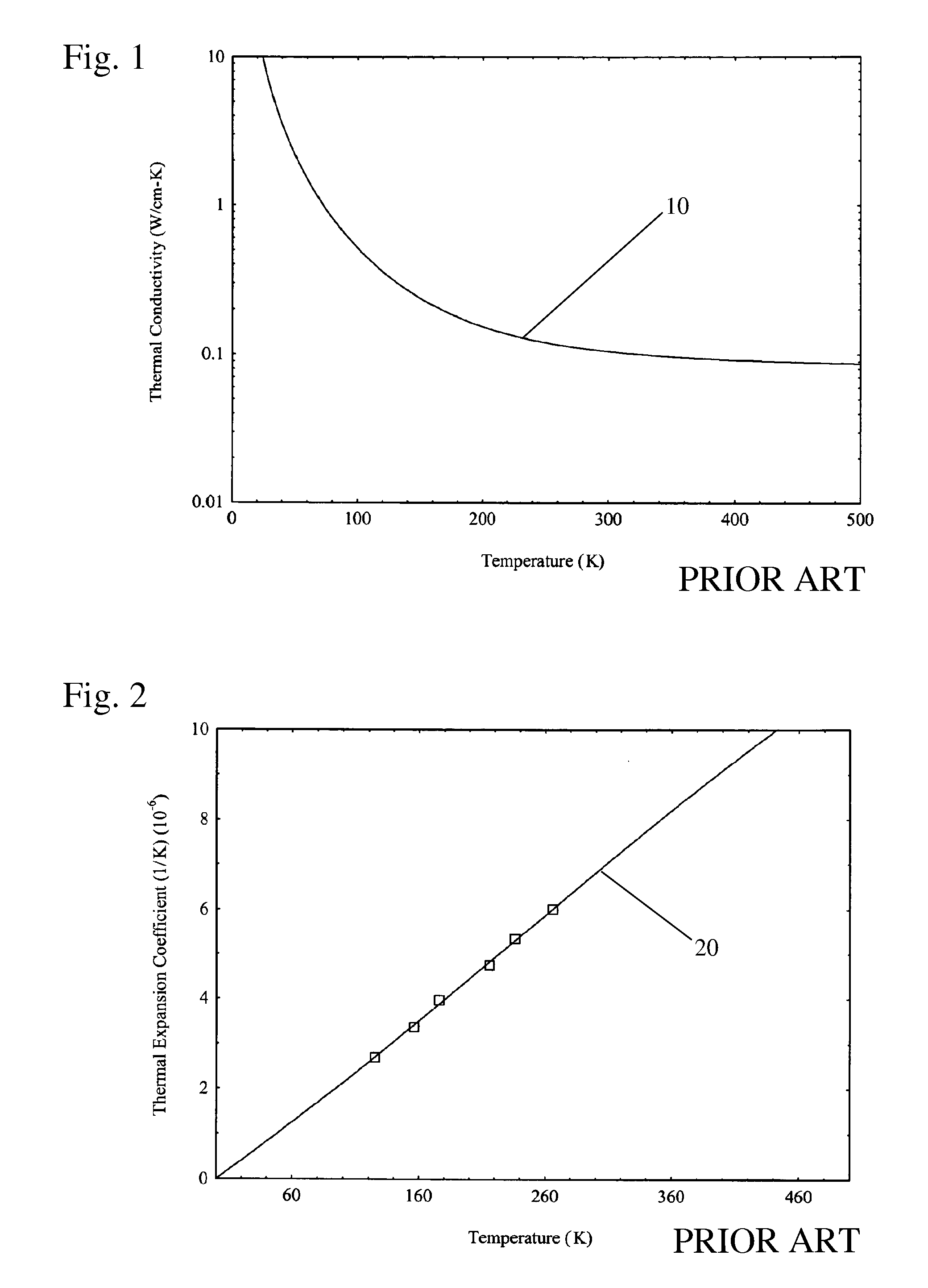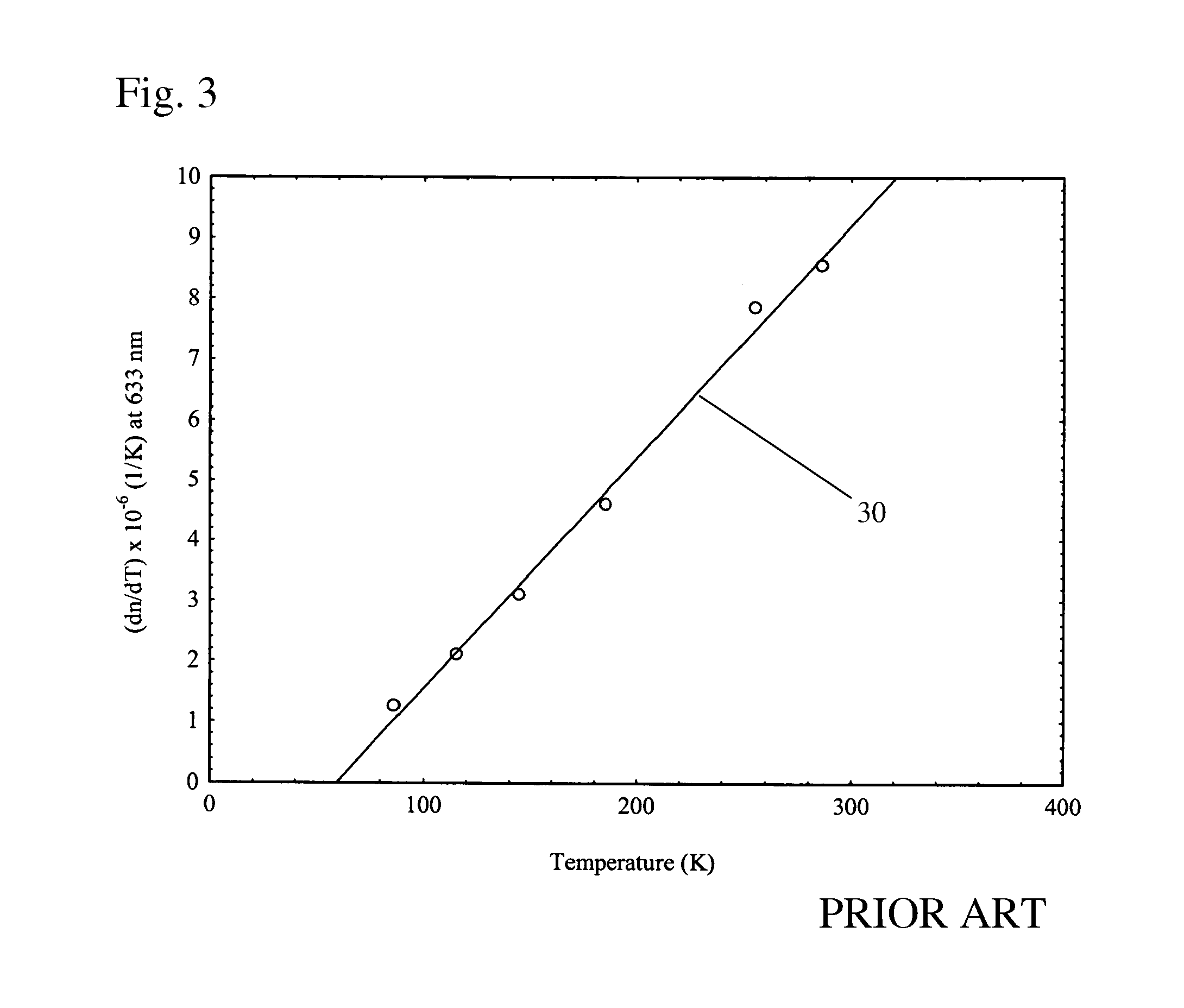Cryogenically Cooled Solid State Lasers
a laser and cryogen technology, applied in lasers, laser cooling arrangements, laser details, etc., can solve the problems of thermal distortion, thermal gradient formation, and changes in the index of refraction of laser materials, so as to achieve high efficiency
- Summary
- Abstract
- Description
- Claims
- Application Information
AI Technical Summary
Benefits of technology
Problems solved by technology
Method used
Image
Examples
case 1
b:YAG Disk with Sapphire Heat Sink and Cooling at 300 K
[0080] We first present results from operating a Yb:YAG thin disk at 300 K and with a sapphire heat sink whose diameter is equal to that of the Yb:YAG disk and when the entire bottom heat sink face is held at constant temperature. The geometry (130) is shown in FIG. 10. The temperature contours (132) are shown in a cut through the center of the disk in FIG. 10. The temperature rise from the bottom of the heat sink to the maximum in the undoped top YAG disk is 605° C. Also note that the contours are all parallel, indicating that the heat flow is uni-directional out of the Yb:YAG disk into the sapphire and then is ultimately removed by a cooling fluid at the bottom of the heat sink. This is confirmed in FIG. 11 where the heat flow (140) is shown and with each arrow indicating the heat flow direction. In FIG. 12, the temperature (150) is shown at each point in the center of the disk / heat sink assembly and one may ascertain the temp...
case 2
b:YAG Disk with Sapphire Heat Sink and Cooling at 77 K
[0082] If however the same disk / heat sink assembly is cooled to 77 K, rather different results are obtained. FIG. 14 shows the temperature contours (170) for the same laser amplifier and again the contours are all parallel indicating operation as a face-pumped laser. The entire temperature rise is now only 3.9° C.; FIG. 15 indicates that about 2.65° C. of the 3.9° C. temperature rise (180) is a result of the thermal resistance of the sapphire heat sink. The temperature rise is only about 1.25° C. in the Yb:YAG and undoped YAG disks, and because the average temperature is only a few degrees above LN2 temperature, the Yb:YAG laser material acts like a four-level laser. In this case the stress and strain levels are residual, thus thermally-induced fracture is not an issue. Even with such a large thermal loading (the heat power density is about 5058 W / cm3 in both cases), FIG. 16 shows that the strain distortion (190) at the top face ...
case 3
b:YAG Disk with Wide Sapphire Heat Sink and Cooling at 300 K
[0083] Here, we widened the 3 mm thick sapphire disk to 2 cm. This results in the situation where the heat flux is not completely parallel to the disk normal. As shown in FIG. 17 however, the maximum temperature (200) is reduced when compared to Case 1 because the larger sapphire volume results in less thermal impedance. FIG. 18 shows the direction of the heat flux (210) and it can be observed that some of the heat flux moves transversely into the sapphire region having a diameter greater than the Yb:YAG disk. This transverse flux is what is responsible for the flux lines no longer being parallel. Because every ray passing through the clear Yb:YAG disks does not see the same total thermal environment, there is now a radial varying phase across a beam after exiting the amplifier. It is remarkable however that the temperature distributions (220, 230) on the top and bottom Yb:YAG faces are almost identical (see FIGS. 19 and 20...
PUM
 Login to View More
Login to View More Abstract
Description
Claims
Application Information
 Login to View More
Login to View More - R&D
- Intellectual Property
- Life Sciences
- Materials
- Tech Scout
- Unparalleled Data Quality
- Higher Quality Content
- 60% Fewer Hallucinations
Browse by: Latest US Patents, China's latest patents, Technical Efficacy Thesaurus, Application Domain, Technology Topic, Popular Technical Reports.
© 2025 PatSnap. All rights reserved.Legal|Privacy policy|Modern Slavery Act Transparency Statement|Sitemap|About US| Contact US: help@patsnap.com



